Physics Research Groups
Research Groups
Galactic Dynamics (Dr. Arunima Banerjee)
Our broad area of research is Theoretical Astrophysics focusing on
- Modelling and Simulation as applied to dynamics of galaxies, galaxy formation and evolution studies and the role of dark matter
- HI 21cm radiosynthesis observations
- Bayesian Statistics, Machine Learning and Data Science in Galaxy Astrophysics
- Gravitation: Alternative Theories
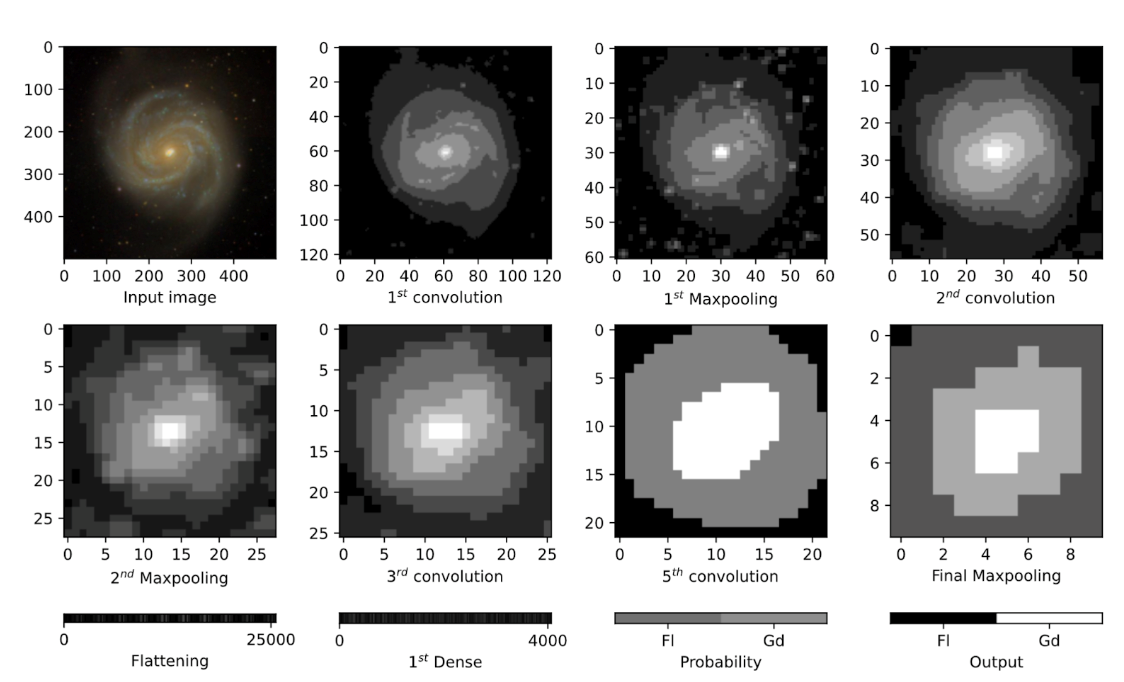
Experimental High Energy Physics Group (Dr. Chitrasen Jena)
Our group focuses broadly on studying the phase diagram of Quantum ChromoDynamics (QCD), various signatures of Quark-Gluon Plasma (QGP) and understanding the particle production mechanism in high-energy nuclear collisions. We are also involved in direct dark matter detection experiment.

Bio.Microfluidics and Soft Matter Group (Dr. Dileep Mampallil)
Our group uses Microfluidics to address diverse problems in Physics and Biology having fundamental interest. We study evaporative dynamics of micro-droplets, liquid-liquid phase separation, and droplet dynamics, in general. Also, we use micro-droplets to study pathogen survival mechanisms in aerosols and bio-physical aspects of tumors.

Observational Astronomy : Star and Planet Formation (Dr. Jessy Jose)
The main focus of our group is to study the impact of various environmental conditions including stellar feedback and metallicity on star and planet formation process. We use national and international multi-wavelength observational facilities to carry out our research activities.

Astrophysics: Polarimetry and Interstellar Magnetic Fields Group (Dr. Eswaraiah Chakali)
Our group focuses on multi-wavelength dust polarization observations to probe the morphology of magnetic fields at a wide range of spatial scales and densities of molecular clouds. By utilizing the maps of magnetic fields, column density, and molecular lines, we investigate the relative importance of magnetic fields compared to gravity and turbulence. We also use the Zeeman splitting of spectral lines to directly measure the strength of the magnetic fields inside the cold and dense clouds. We use optical, near-infrared, sub-millimeter, and radio telescopes spread across the globe for conducting the observations.
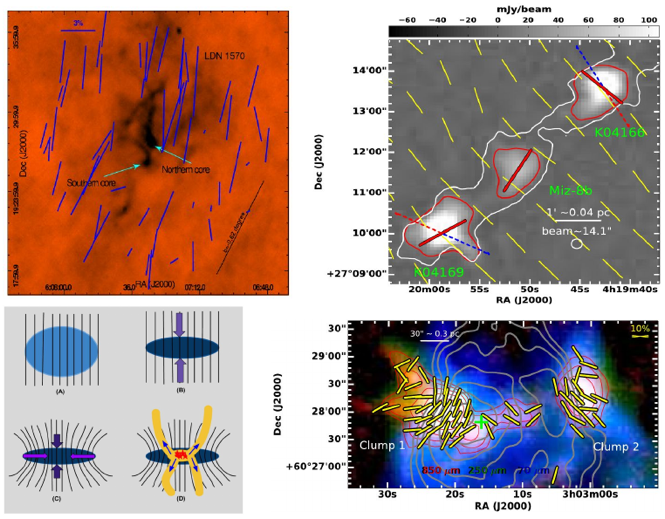
Atomic & Molecular Physics (Dr. S. Sunil Kumar)
In our research group, we explore the structure, spectra, and dynamics of molecular ions of biological and astrophysical interest. We study their interaction with photons using home-built experimental tools. We also exploit quantum computational tools to complement our experimental data. Our current focus is on molecular biophysics in which we address the photostability of biomolecular ions. We intend to measure for the first time the absolute photodetachment cross-sections of biomolecular ions in the gas phase. We are also interested in exploring how various processes such as fluorescence, intravibrational relaxation, and intersystem crossing are governed by the structure and dynamics of the molecules and their interaction with the environment.
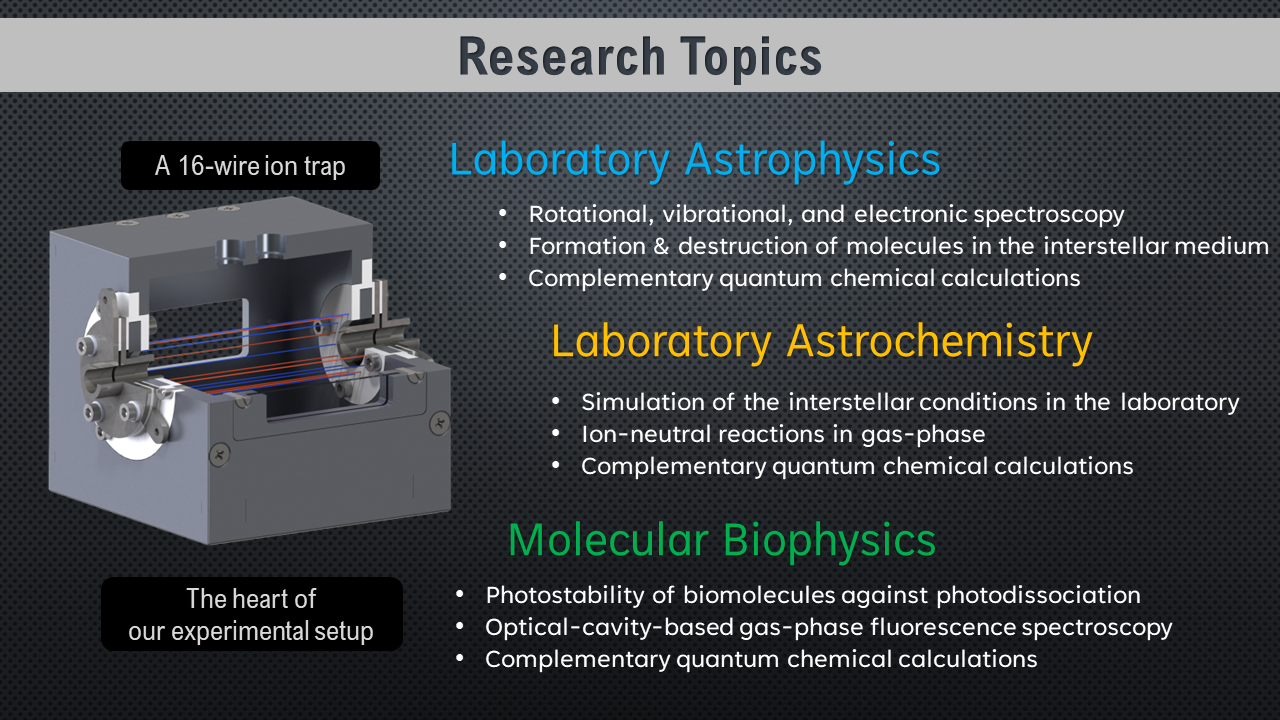
Quantum Theory of Nanomaterials Group (Dr. Sudipta Dutta)
Under the broad umbrella of theoretical condensed matter physics, we explore electronic, magnetic, optical and transport properties of low-dimensional strongly-correlated materials and topological quantum phases
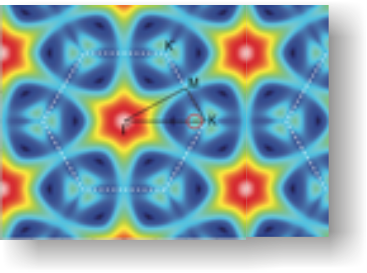
Organic opto-electronics group (Dr. Kanagasekaran)
Our research group concentrates on the fabrication of organic semiconductor devices for a range of optoelectronic applications, including light emitting field effect transistors, photovoltaic devices, light emitting diodes and sensors. We aim to realize the electrically driven laser using organic materials. Organic laser is a new research could make lasers emitting a wide range of colors more accessible and open new applications from communications and sensing to displays. The figure shows the FET structure and the light emission images of the electrical and optical excitation.

Active Matter Theory Group (Dr. Tapan C. Adhyapak)
Active particles are motile objects, which can either be living or inert. Some examples are bacteria, artificial microswimmers and actin-myosin assembly in living cells. Collectively they form fluids, liquid-crystals, etc. in the conventional sense; however, motility of the constituent particles brings in an unusual twist — the activity. As a result a variety of striking and surprising properties with novel physics emerge. Our group is trying to unravel the mysteries of active systems in some of the most challenging situations, such as, in crowded environments, under confinements, and with flexible appendages generating complex hydrodynamic interactions.
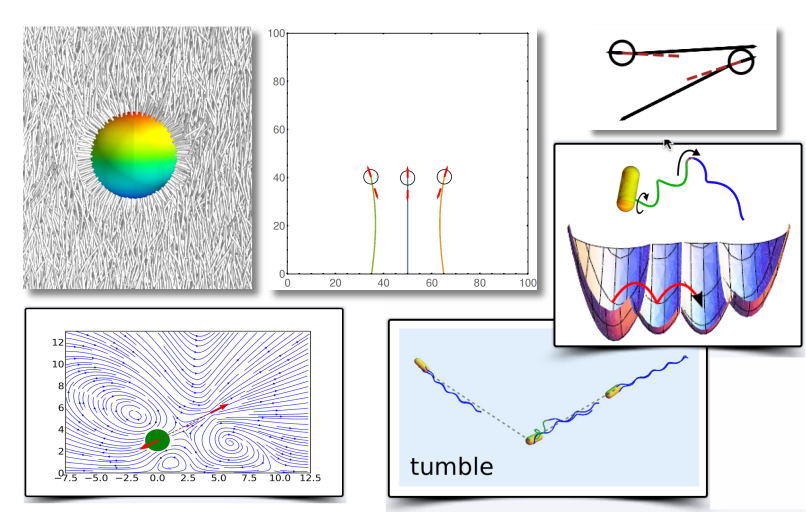
Soft Matter Theory and Computation Group (Dr. Rakesh S. Singh)
My group applies theoretical and computational tools rooted in statistical mechanics to understand the thermodynamic, dynamic, and structural properties of complex systems. Specifically, our research interests include understanding the microscopic structural origin of the anomalous behavior of supercooled liquids and glasses, phase transition in equilibrium and driven out-of-equilibrium systems, and self-assembly at nanoscales. My group is also involved in method development for robust coarse-graining of soft matter systems and understanding the diffusion-controlled phenomena in condensed media involving complex free energy landscapes.
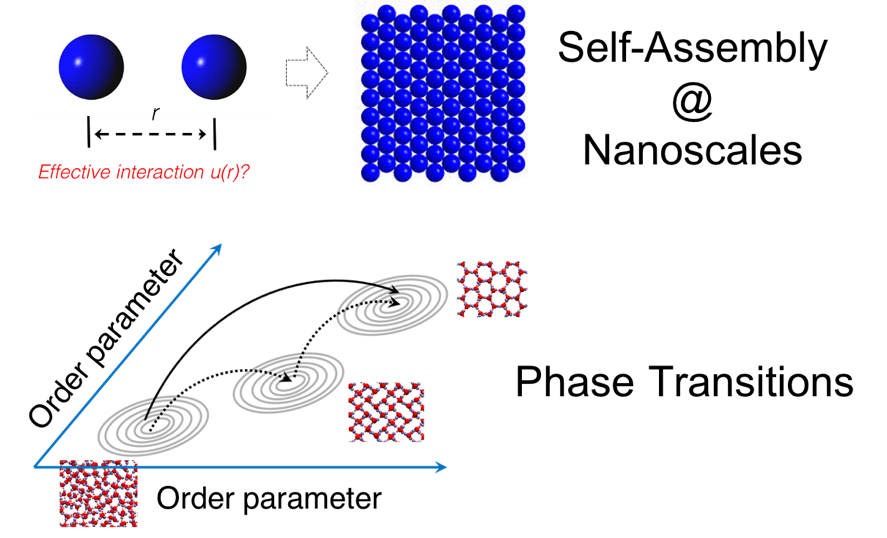
Quantum matter group (Dr. Sambuddha Sanyal)
We are working in the area of theoretical condensed matter physics. Our current research interest is spanned across strongly correlated many body systems, quantum-matter, quantum spin liquids, non-equilibrium dynamics in quantum systems, open quantum system, thermalisation and chaos, disordered systems and computations and algorithms for many body systems.
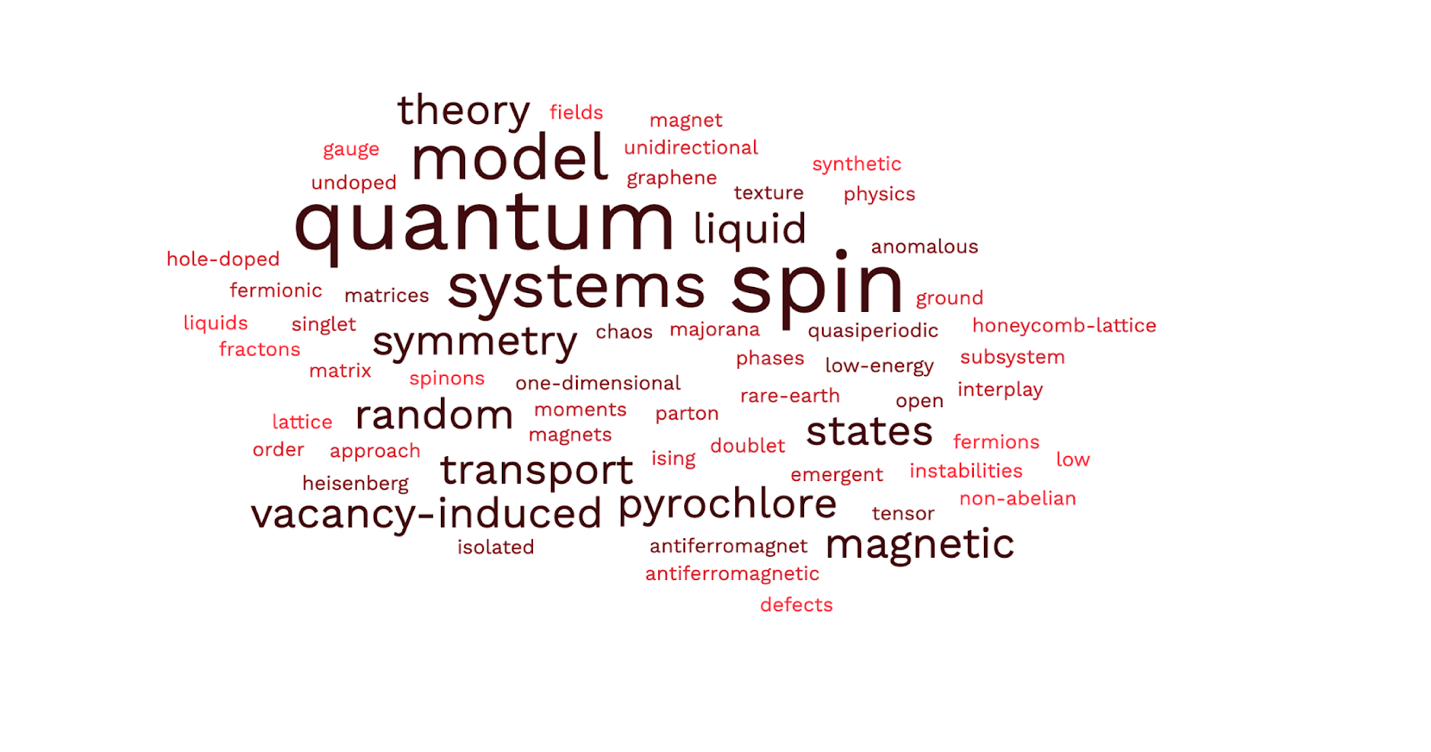
Soft and Active Matter Group (Dr. Ravi Kumar Pujala)
Our research group focuses on studying physics of soft matter systems both passive and active systems; Fabricate new mesostructured materials by self-assembly. The ultimate goal is to develop new functional soft materials with reconfigurable structures at the nano and meso-scales.
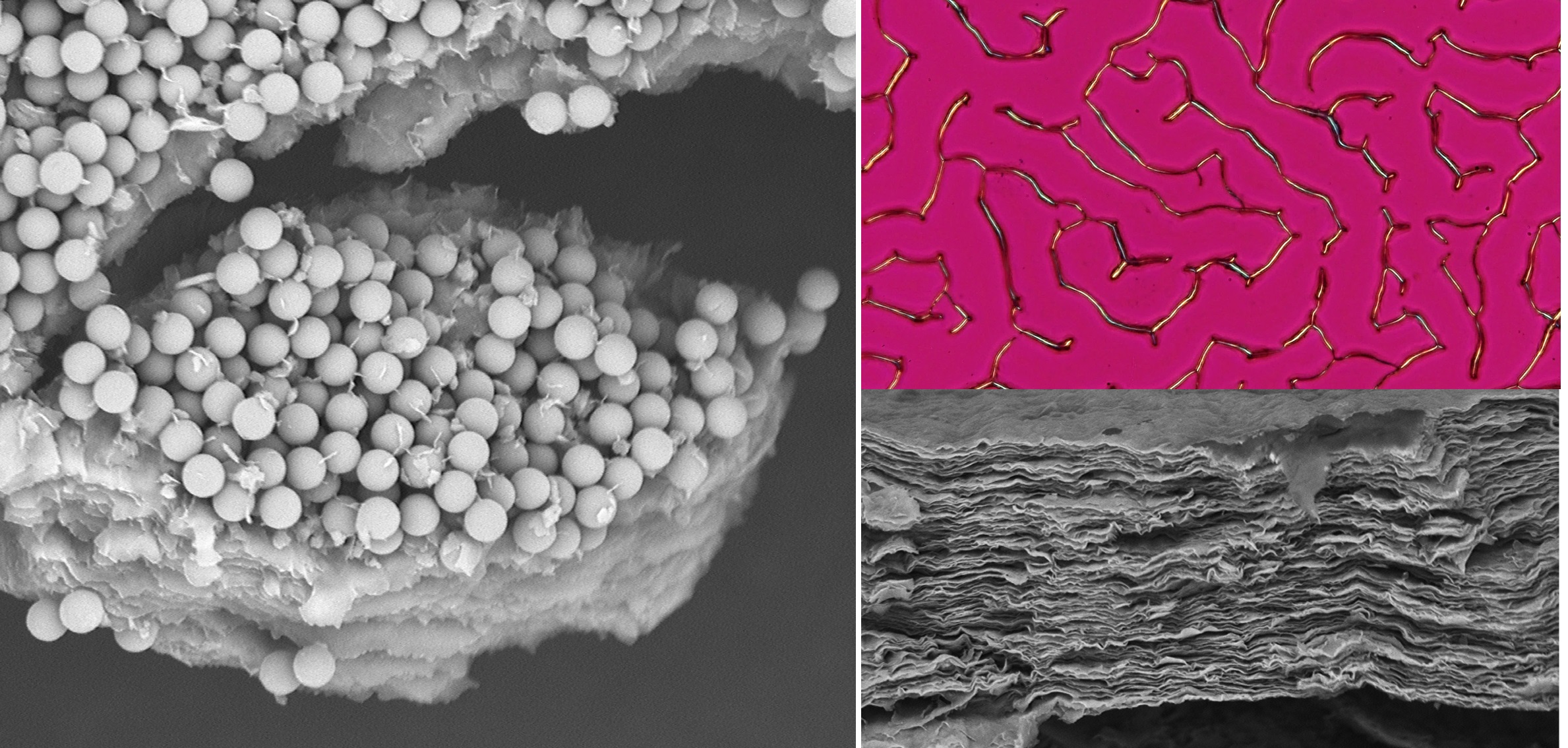
Complex Networks and dynamics (Dr. Aradhana Singh)
We aim to develop theories to mimic real-world complex systems’ structure and function. Our brain is one of the most complex systems, the structure, and dynamics of which still need to be fully understood. Using network theory and data analysis techniques, we try to understand the structure of such complex systems. We study coupled dynamics on these networks and are particularly interested in the synchronized cluster patterns.
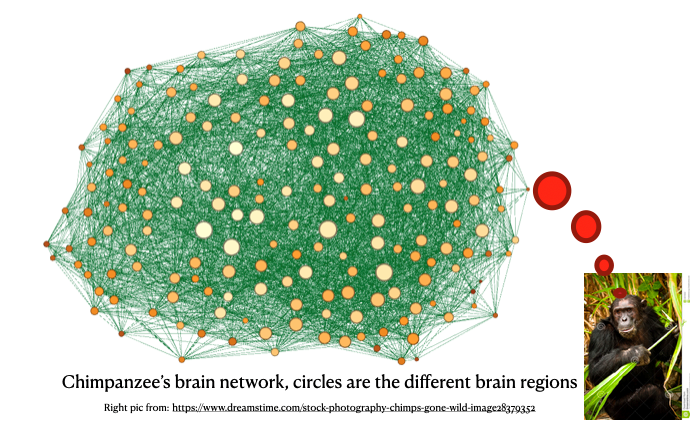
Ultrafast Spectroscopy and Applications Group (Dr. Srabani Kar)
Our research group is focused on exploring optoelectronic properties of nanoscale materials in femtosecond to nanosecond time scale using femtosecond laser. We use ultrafast time-resolved techniques such as optical pump-optical probe and optical pump-terahertz probe for these research. We study a wide range of materials including 0D, 1D, and 2D. Thereafter, we apply the potential materials for designing optical micro-devices or micro-nanostructures to study pulse laser assisted photoporation for intracellular drug delivery into diverse cancer cells.



